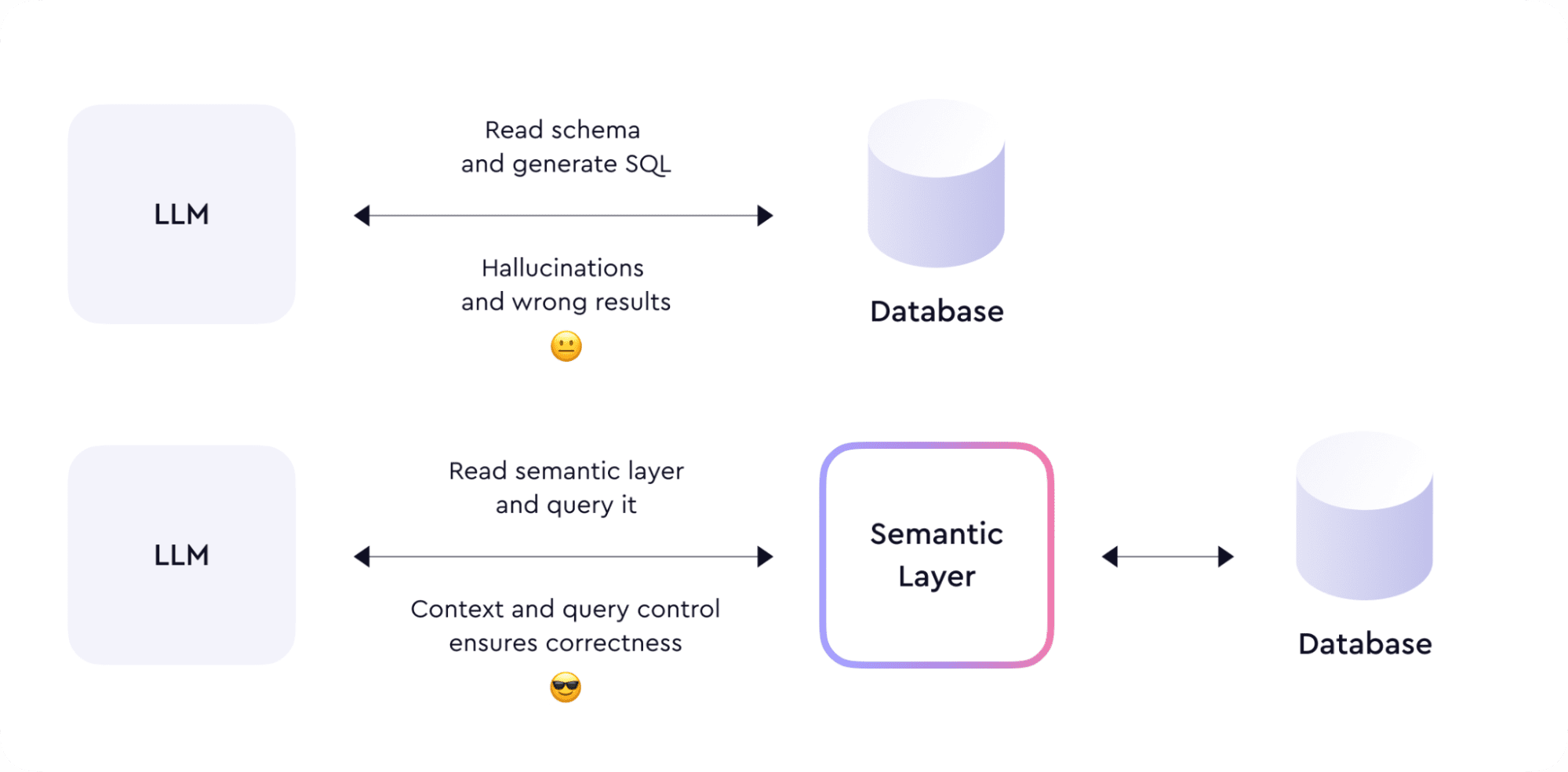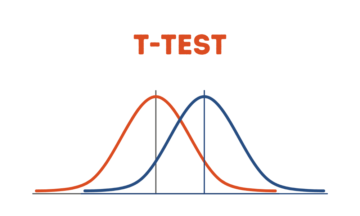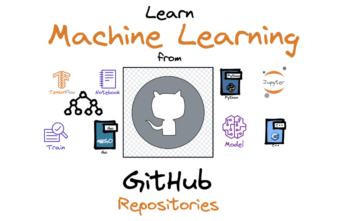Sponsored Content

As companies look to make access to data easier for employees and external customers, more data leaders look to AI to help them. But, there remains a concern as to how to best setup AI bots and Large Language Models in order to ensure speedy access to correct data. Integrating a semantic layer with Language Learning Models (LLMs) presents a clean solution to this, particularly in the realm of AI chatbots. This combination empowers businesses to generate fast responses and reports based on their data. Leveraging AI and semantic layers is advancing business intelligence, making it easier than ever for people to interact with data.
Learn more in this recorded webinar, in which Fleet Management company Quantatec walks through the AI Bot they developed on top of the Cube semantic layer so their non-technical employees can easily asl questions of data without having to write SQL queries or build their own dashboards.
Effective Role of Semantic Layer in AI Chatbots and Data Accuracy
AI chatbots, powered by Language Learning Models (LLMs), are capable of understanding and responding to complex queries in natural language, wit high accuracy. This means that instead of having to write complex SQL queries, users can simply ask the chatbot a question in plain English and receive an accurate response. This not only makes data analysis more accessible to non-technical users, but also significantly speeds up the process of data retrieval and analysis.
While LLMs are incredibly powerful, they are not without their limitations. One of the main challenges is ensuring that the AI chatbot correctly interprets and responds to the user’s query. This is where the semantic layer comes in. The semantic layer acts as an intermediary between the AI chatbot and the database, interpreting the chatbot’s queries and ensuring that they are correctly executed.
The semantic layer also plays a crucial role in ensuring data security. By controlling the AI chatbot’s access to the database, the semantic layer can prevent unauthorized access to sensitive data. This is particularly important in multi-tenant environments, where different users have different levels of access to the data.
In addition to enhancing data security, the semantic layer also improves the performance of the AI chatbot. The semantic layer can significantly speed up the chatbot’s response time by pre-computing complex joins and calculations. This not only improves the user experience but also allows businesses to analyze their data more quickly and efficiently.
In summing up, the fusion of a semantic layer with an LLM to devise an AI chatbot is modernizing business intelligence and embedded anlaytics data application. Its power to enhance data analysis efficiency and precision significantly impacts decision-making processes, setting a new standard in business practices. It streamlines access to data analysis, bolsters efficiency, and fortifies security.
Learn more in this recorded webinar, in which Fleet Management company Quantatec walks through the AI Bot they developed on top of the Cube semantic layer so their non-technical employees can easily access data.
- SEO Powered Content & PR Distribution. Get Amplified Today.
- PlatoData.Network Vertical Generative Ai. Empower Yourself. Access Here.
- PlatoAiStream. Web3 Intelligence. Knowledge Amplified. Access Here.
- PlatoESG. Carbon, CleanTech, Energy, Environment, Solar, Waste Management. Access Here.
- PlatoHealth. Biotech and Clinical Trials Intelligence. Access Here.
- Source: https://www.kdnuggets.com/2024/02/cube-semantic-layers-missing-piece-ai-enabled-analytics?utm_source=rss&utm_medium=rss&utm_campaign=semantic-layers-are-the-missing-piece-for-ai-enabled-analytics
- :is
- :not
- :where
- $UP
- a
- access
- Access to data
- accessible
- accuracy
- accurate
- acts
- addition
- advancing
- AI
- AI bots
- AI chatbot
- allows
- also
- an
- analysis
- analytics
- analyze
- and
- Application
- ARE
- AS
- ask
- based
- BEST
- between
- bolsters
- Bot
- bots
- build
- business
- business intelligence
- business practices
- businesses
- but
- by
- calculations
- CAN
- capable
- challenges
- chatbot
- chatbots
- clean
- combination
- comes
- Companies
- company
- complex
- Concern
- controlling
- correct
- correctly
- crucial
- Customers
- dashboards
- data
- data analysis
- data security
- Database
- Decision Making
- developed
- devise
- different
- easier
- easily
- efficiency
- efficiently
- embedded
- employees
- empowers
- English
- enhance
- enhancing
- ensure
- ensuring
- environments
- EVER
- executed
- experience
- external
- FAST
- FLEET
- fleet management
- For
- fusion
- generate
- Have
- having
- help
- High
- How
- How To
- HTTPS
- Impacts
- important
- improves
- in
- incredibly
- instead
- Integrating
- Intelligence
- interact
- intermediary
- interpreting
- IT
- ITS
- Joins
- KDnuggets
- language
- large
- layer
- layers
- leaders
- learning
- levels
- leveraging
- limitations
- llm
- Look
- Main
- make
- MAKES
- Making
- management
- means
- missing
- models
- modernizing
- more
- Natural
- Natural Language
- New
- non-technical
- of
- on
- ONE
- only
- or
- order
- own
- particularly
- People
- performance
- piece
- Plain
- plato
- Plato Data Intelligence
- PlatoData
- plays
- power
- powered
- powerful
- practices
- Precision
- presents
- prevent
- process
- processes
- queries
- query
- question
- Questions
- quickly
- realm
- receive
- recorded
- remains
- Reports
- responding
- response
- responses
- retrieval
- Role
- s
- security
- semantic
- sensitive
- setting
- setup
- significantly
- simply
- So
- solution
- speed
- speeds
- speedy
- SQL
- standard
- streamlines
- than
- that
- The
- their
- Them
- There.
- they
- this
- Through
- time
- to
- top
- unauthorized
- understanding
- User
- User Experience
- users
- walks
- webinar
- which
- with
- without
- write
- zephyrnet










